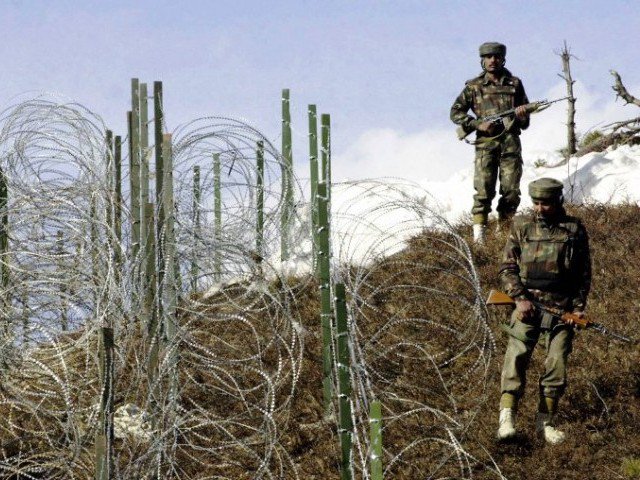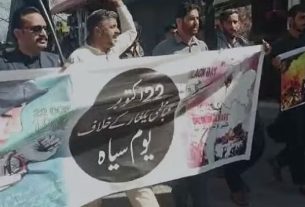When New Delhi stripped Indian-administered Kashmir of its limited autonomy in 2019, the right-wing Bharatiya Janata Party (BJP) government defended the move, claiming it will wipe out a decades-old armed rebellion in the disputed region.
Three years later, the same government is reviving a civilian militia, called the Village Defence Guards (VDGs), in the region’s southern Jammu area.
The move came shortly after seven Hindu civilians were killed in the area two months ago – a sign of growing anti-India sentiments in the country’s only Muslim-majority region, also claimed by neighbouring Pakistan.
What is VDG?
First established in 1995 in the districts of Jammu area, the VDGs (then known as Village Defence Committees) were tasked with combatting the armed rebellion in Kashmir. They had nearly 4,000 members and more than 27,000 volunteers.
Demands to disband the civil militia grew in the early 2000s when the rebellion began to dwindle and rebel groups – fighting either for complete independence or merger with Pakistan – lost their influence.
However, since 2019, as the region’s minorities – mainly the Hindus and Sikhs – faced deadly attacks by the suspected rebels, demands to revive the VDGs started to gain momentum.
The revived VDGs have been formed along the lines of Salwa Judum, a notorious militia group created at the turn of the century in the central Indian state of Chhattisgarh, where the Maoists led a resistance movement of the Indigenous people resisting a corporate takeover of their lands and resources.
In 2011, India’s Supreme Court declared the deployment of tribal youths for the Salwa Judum or any other militia aimed at fighting the Maoists as unconstitutional and ordered an immediate disarming of the militia.
No Kashmiri individual or organisation so far has challenged the revival of the VDGs in an Indian court.
Immediate trigger
While the federal home ministry had approved the setting up of the VDGs in March last year, the killing of seven Hindu civilians by suspected rebels in January became an immediate trigger for the Hindu nationalist government’s decision.
On the evening of January 1 this year, the freezing silence in the sleepy village of Dhangri in Jammu area’s Rajouri district was broken by a roar of guns.
A gunman fired multiple rounds at Satish Sharma, a 42-year-old former Indian army soldier, killing him on the spot. His teenage son and younger brother also received bullet injuries.
The same evening, three more civilians were killed in Dhangri in a similar fashion. Police suspect two gunmen were involved in the killings.
The next day, as the villagers were yet to recover from the killings, two children died in an explosion at the house of one of the victims. Days later, a civilian wounded in the January 1 attacks succumbed to his injuries.
The villagers said it was a targeted attack on the community. As the incident caused fears in the area, calls to revive the VDGs became louder.
Satish’s father, Satpal Sharma, 65, told Al Jazeera it was the first time such an incident had happened in their village surrounded by fields of maize and mustard. “Life is no more the same here,” he said.
Dhangri lies close to the Line of Control (LoC), the demarcation line that divides Kashmir between India and Pakistan. The area has mostly been peaceful, unlike the Kashmir Valley where gunfights between suspected rebels and Indian security forces are common.
“We fear going out after dark. Shutters are down early, streets are deserted. The fear is overwhelming,” Satpal said.
Hundreds recruited
Since January, hundreds of civilians from Dhangri and other villages around Jammu are being trained and armed by the Central Reserve Police Force (CRPF) paramilitary group.
“We presently have more than 150 VDG members active in the village,” Dhangri’s village head Dheeraj Sharma told Al Jazeera.
Sharma said the January killings highlighted the importance of arming the civilians. “With weapons, people can defend themselves.”
Uttam Chand, vice president of VDG in Kathua district, told Al Jazeera the militia will “protect the society from any social evils”.
Chand said their demands for the revival of the militia group were ignored for years. “We took a stand and raised our voice,” he said.
“New people have joined the groups and old members have become active again. We want weapons and ammunition,” he added.
A VDG member is paid a monthly remuneration of 4,000-4,500 rupees ($48-$54). But Chand said he is still waiting for his first payment.
Angrez Singh, a 55-year-old VDG member from Rajouri district, said he remains vigilant during the nights.
“My weapons are for self-protection and the protection of our families and neighbours,” the former serviceman told Al Jazeera. “I have been a part of the militia since the 1990s. If you have a weapon, you can avoid any fear.”
Singh said many men in Rajouri are ready to join the VDGs, but there are not enough weapons.
Fears of religious tension
The government justifies the arming of civilians in Kashmir as a policy to safeguard people in remote terrains of the Himalayan region.
Muhammad Aslam Chowdhary, a senior police official in Rajouri, told Al Jazeera that 700 VDG members have been sanctioned in Rajouri. He said while some have been given self-loading rifles (SLRs), a majority have Lee–Enfield rifles, commonly known as 303 – a bolt action, magazine-fed rifle invented in the late 19th century.
Chowdhary said the VDGs will operate under police supervision.
“They are defence groups and they have to do patrolling at nights to prevent any terror attacks. They will also help in search operations. They will also remain vigilant and there are WhatsApp groups where they will provide information,” he said.
Ajai Sahni, a New Delhi-based security expert, said he did not see any negative effect of forming the VDGs if the scheme was correctly implemented.
“They are an emergency force that will be used to resist an attack. They will not be allowed to do any operations anywhere or use weapons outside of the villages,” he told Al Jazeera, adding that the regular security forces cannot be available everywhere.
But not everyone in the region has welcomed the move to arm the civilians, with many politicians and experts fearing it could spark religious tensions.
Shafiq Mir, a politician in Rajouri, said the weapons could be misused by people to settle personal scores as had happened in the past.
“Our concern is that weapons should not be given to civilians in this way. The neighbours of these VDG members who are from other communities are not feeling secure. Even when there are small issues in the locality, they will not feel safe as the guns could be misused,” Mir told Al Jazeera.
Mir said the government should strengthen the deployment of armed forces in areas of security concern rather than arming civilians.
Mir’s fears are not unfounded. The civil militias in the 1990s were accused of many criminal activities, including murders and rapes.
Official data shows at least 221 cases were registered against the members of the VDGs in the 1990s. Nearly two dozen of these cases were related to murder, seven to rape, and 15 cases involved rioting.__Al Jazeera





